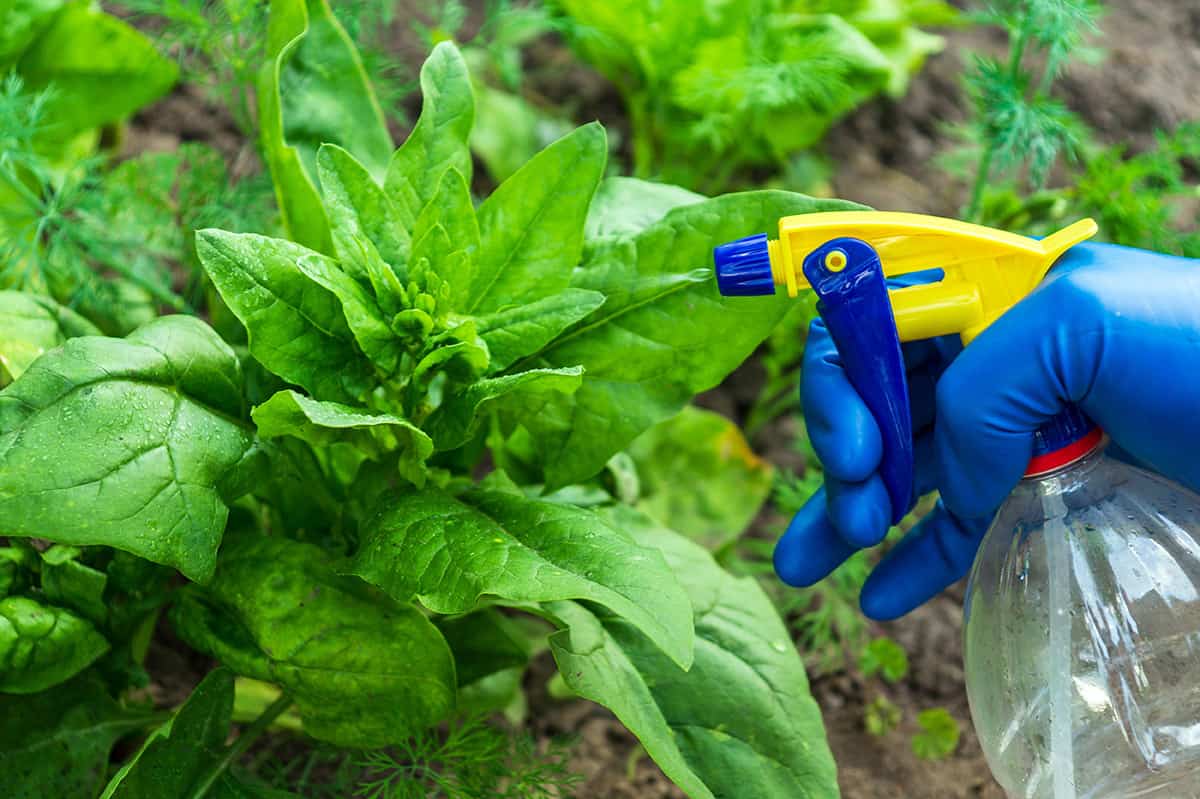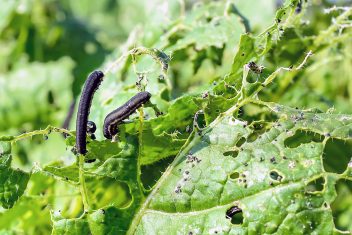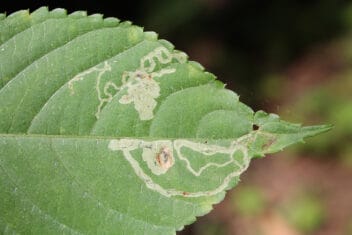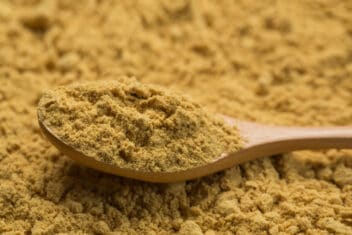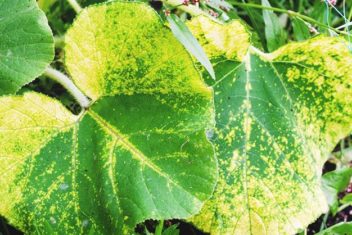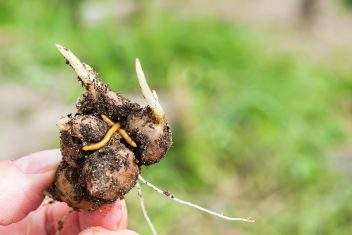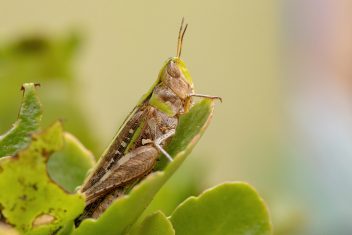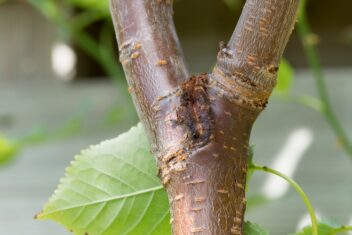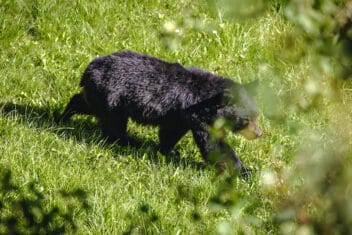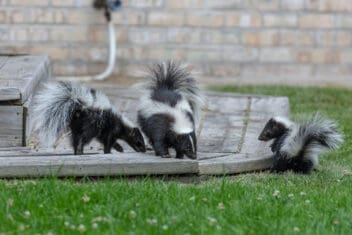Almost every gardener has tried their hand at growing spinach at some point. It grows quickly, packs a ton of nutrition, and takes little work to make it thrive. Unless, of course, your spinach is hit by pests or diseases.
Each year that I grow spinach, inevitably, something tries to get ahold of my plants. One year, aphids took them down, along with several other nearby plants. One year, I couldn’t stop the downy mildew. I wish I had known that fungicides could help!
Now I know how to handle whatever the situation. This guide will help you become a master of growing spinach, too.
8 Spinach Plant Pests
Spinach plants are attacked by a number of different pests, ranging from ones that only cause slight damage to ones that can completely kill your crop in no time.
1. Aphids

One of the most common spinach plant pests is aphids. These small insects stick to the underside of the leaves, sucking on the juice of the plant and excreting a sticky substance called honeydew. Honeydew attracts ants and encourages the growth of sooty mold on your spinach plants.
Small aphid populations are typically not an issue. If the bugs are only on a few leaves, prune them to keep the infestation in check. If things get worse, there are tons of different ways to keep aphids under control in the garden.
2. Armyworms
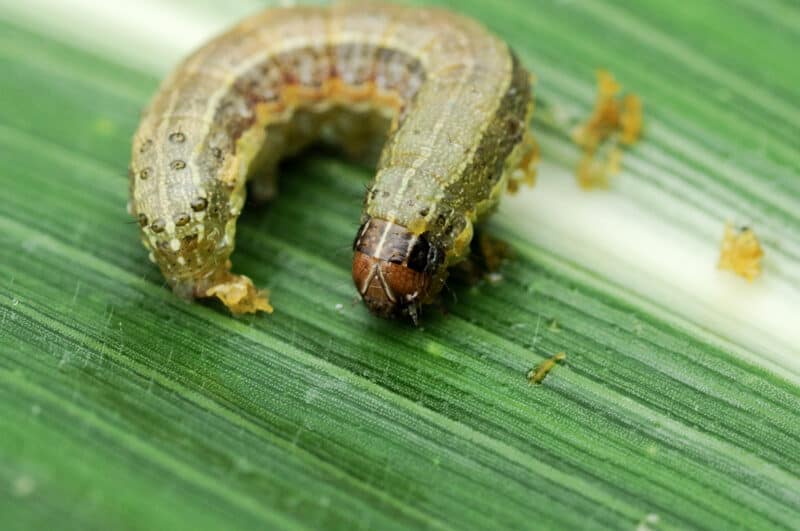
Armyworms (Spodoptera spp.) are another frustrating pest you’ll find on spinach plants. They eat the foliage and cause closely grouped circular or irregularly-shaped holes. If you have a bunch of the larvae feeding heavily, they’ll skeletonize entire leaves.
The adults are brown moths, but they don’t do any damage to the plants. They lay eggs, which you might find on the leaves in large clusters that are covered with a cottony or fuzzy coating. Those eggs hatch into the larvae that do all the damage.
Some species of armyworms breed rapidly, producing up to five generations in one year, so they can rapidly become a problem.
Some organic control methods work on these pests, such as applications of Bacillus thuringiensis when the worms are young. Our guide to armyworms in the garden can help you get an infestation under control.
3. Cabbage Looper
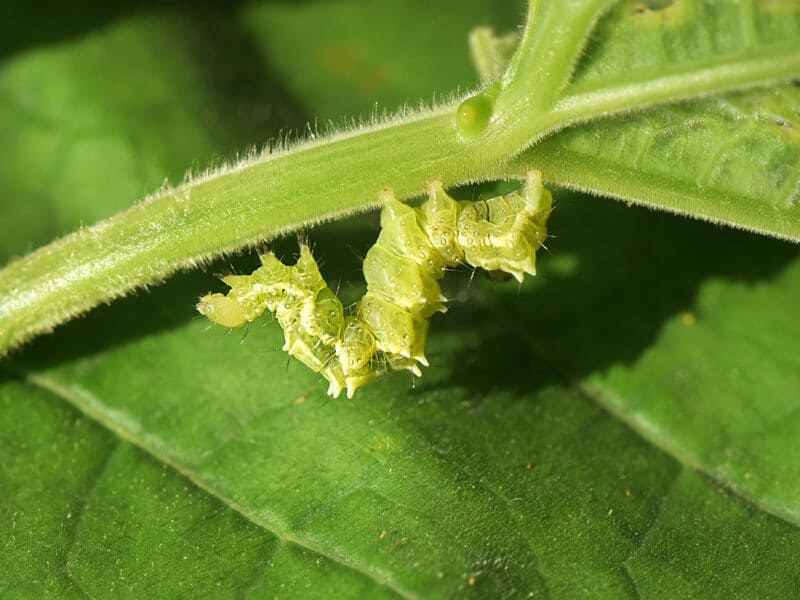
It’s not uncommon to find cabbage loopers on your spinach plants. These pests cause large or small holes in the leaves; the damage is extensive at times. It’s easy to identify cabbage loopers in the garden. They are pale green with white lines that run down either side of their bodies, and when they move, they arch their bodies.
One problem with cabbage loopers is that they overwinter in the crop debris, so it’s easy for these pests to continue to spread and infect entire gardens. Typically, natural enemies are enough to keep the cabbage looper populations in check, but you also can remove them by hand and apply Bacillus thuringiensis.
Learn more about controlling cabbage loopers in the garden.
4. Cutworms
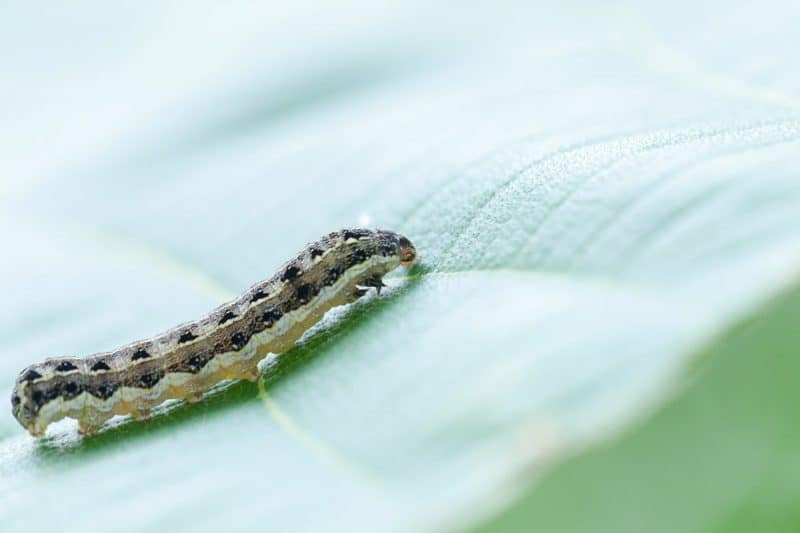
Cutworms (Trichoplusia ni) are another destructive pest that are the caterpillars of brown or gray night-flying moths. These pests destroy new seedlings in a flash, so you have to watch your garden to make sure they don’t take down your plants.
Cutworms chew through plant stems, severing them at the base. One method to control them is to make cardboard collars from toilet paper or paper towel rolls. These keep cutworms away from the stems of your plants.
We have a helpful guide how to prevent cutworm damage in your garden if you come across these pests.
5. Grasshoppers
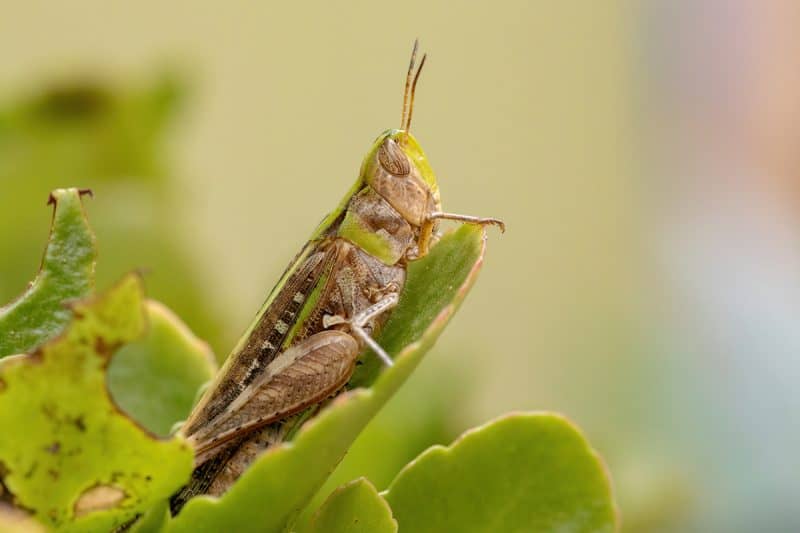
Most people don’t think of grasshoppers as destructive garden pests, but these little insects eat up to half their body weight in plant matter each day. If you have a grasshopper infestation, they can cause a lot of damage quickly.
Some people think these pests are cute, but they’re far from it. They’ll eat entire spinach plants in a day or two, so make sure you pay attention and use preventative measures. For example, clearing out any garden debris is essential because grasshoppers use the debris for cover.
Find out how to get rid of grasshoppers in your garden to prevent them from destroying your spinach crop.
6. Spinach Crown Mite
Spinach crown mites are an arachnid that loves to eat spinach plants, as their name suggests. They cause the leaves to become deformed and you’ll find tons of small holes in the new leaves. Spinach crown mites are tiny and transparent, making it hard to spot them, and they live in the crown of the plant.
These pests typically cause damage to newly emerged seedlings and older plants that might be more vulnerable to damage because they’re stressed. Always make sure you remove crop debris because they harbor spinach crown mites. You’ll need to use an acaricide if these mites are damaging your plants extensively.
7. Wireworms
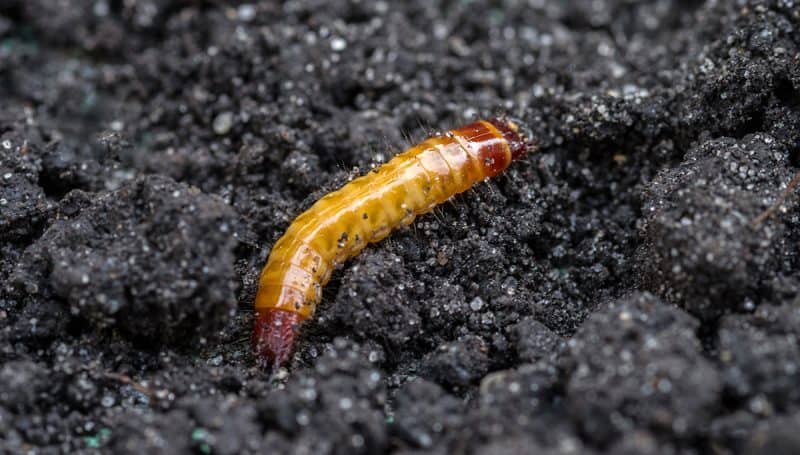
Wireworms are the larvae of click beetles in the family Elateridae. Regardless of the species of wireworms attacking your spinach plants, they all result in the death of the seedlings.
If your young seedlings suddenly collapse, dig in the soil. You might find the wireworm larvae; they look like yellow-brown small worms with shiny skin.
The larval stage lasts for quite a while, between one to five years, and they will stay in the soil and continue to destroy whatever you plant in that area. Tilling your soil helps to reduce the numbers, and you should always rotate crops. If you plant non-hosts, then the pests have nothing to feed on throughout the next year.
To learn more about wireworms and the destruction they cause in the garden, you might want to check out our guide.
8. Slugs and Snails
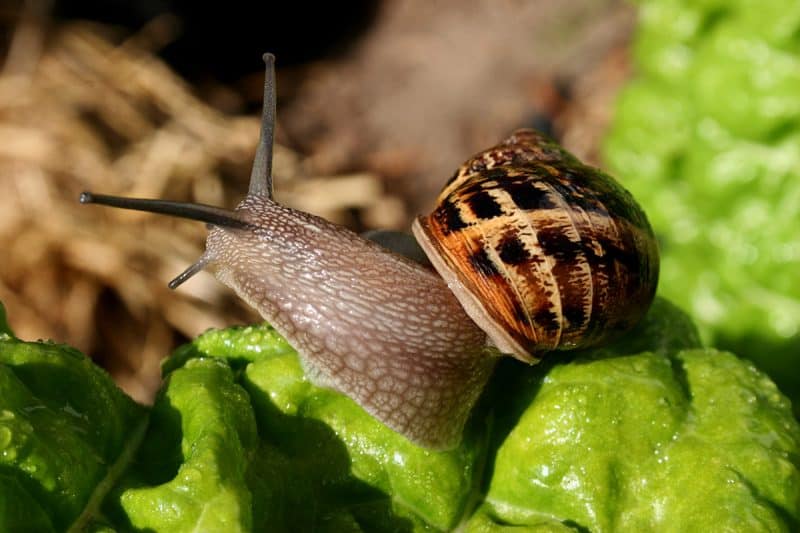
Slugs and snails like most leafy greens, from hostas to lettuce. Chances are if you grow spinach, you’ll have hungry gastropods looking for a bite. They can leave ragged holes in your spinach foliage or they might completely eat a plant down to the ground.
Fortunately, they’re one of the easier spinach pests to deal with. There are many natural ways to handle a slug or snail problem.
5 Spinach Plant Diseases
Spinach is troubled by several diseases, most of them fungal in nature. Good gardening practices like watering at the soil level, spacing plants appropriate, and planting them somewhere they get lots of morning sun goes a long way towards keeping these problems at bay in the first place.
Early detection helps save your spinach from these diseases and lets you stop the spread in your garden.
1. Anthracnose

Anthracnose is actually a term to describe a group of fungi that impact a massive range of plants.
In spinach, it’s caused by the fungus Colletotrichum spinaciae and causes small, water-soaked lesions to develop on spinach leaves. Over time, those lesions grow larger and turn into brown or tan spots that have a papery texture. Severe infections cause the lesions to coalesce and the entire leaf to die.
Anthracnose tends to develop during wet weather, living in the soil until the spores are spread onto your spinach plant by splashing water carrying the soil onto the leaves. That’s why avoiding sprinklers or overhead irrigation is vital for the health of your plants.
Copper fungicides can be used preventatively or if the disease has just started to impact your plants. But once it has taken hold, there’s nothing you can do to stop it.
Learn more about anthracnose and how to deal with it in your garden.
2. Damping Off
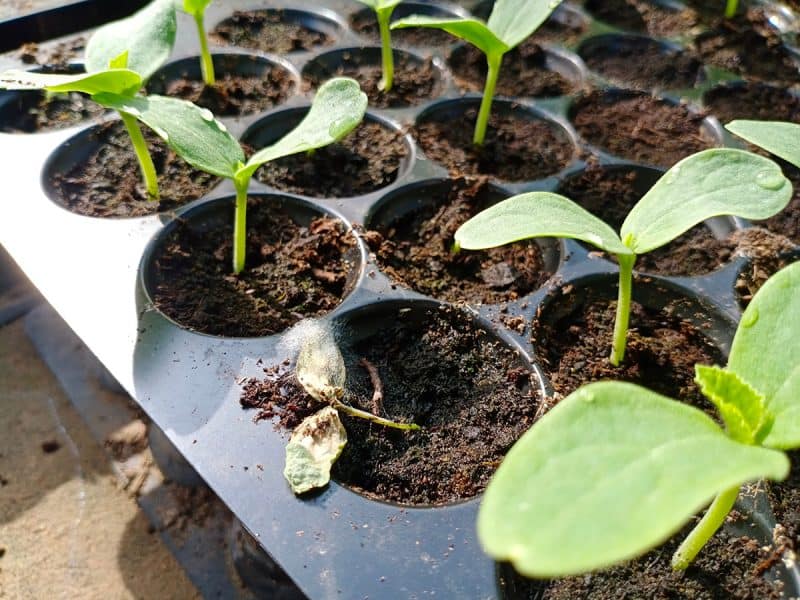
Damping off is one of the most common problems that gardeners face when dealing with new seedlings. It’s an infection caused by fungi or water molds and results in poor germination rates in seeds and the death of newly emerged seedlings. You’ll often see water-soaked rings at the base of the plants before they collapse.
It also causes stunted growth, yellowing lower leaves, wilting, and the collapse and death of older plants. If you remove the plant, you might find water-soaked and discolored roots.
Always make sure you plant disease-free seeds and manage your seedling care properly. Learn more about damping-off in your garden.
3. Downy Mildew

Downy mildew is another fungus that causes a range of symptoms in your spinach plants. The disease typically starts with yellow spots on the cotyledons and early leaves. Over time, the yellow spots enlarge, turn tan and develop a dry texture.
You might also find a purple fungus growth on the underside of the leaves. Severe infections cause curled and distorted leaves.
Downy mildew appears on spinach plants most often when there are cool temperatures and moist soil. Some spinach varieties are resistant to downy mildew, but certain fungicides help protect your plants if you apply them early.
Learn more about treating downy mildew in your garden.
4. Fusarium Wilt
Another fungal infection that spinach plants face is fusarium wilt. It starts with the yellowing of the older leaves of the plant, and over time, fusarium wilt causes the premature death of the plant. In older plants, the veins of the leaves might have dark discoloration, and seedlings develop symptoms similar to damping off.
As you probably guessed, fusarium wilt is one of the worst spinach diseases to have. It survives on the seeds of the plant, so only plant seeds guaranteed to be disease-free. It spreads in warm weather rapidly and is carried from spinach to spinach by pests. Learn more about fusarium wilt and how to prevent this fungus.
5. White Rust
White rust is a fungus that causes yellow spots on the upper sides of the leaves and white, blister-like pustules on the underside of the leaves. The pustules might extend to the upper leaf surfaces as the infection spreads during the later stages.
Infected plants collapse and die if the conditions are right for rapid development of the disease. White rust loves cool, humid nights and mild days.
If you’ve struggled with white rust before, planting spinach varieties that tolerate it better is a good idea. You also might try fungicides, but they’re not very effective once the disease takes hold. Good gardening practices are key in prevention.
